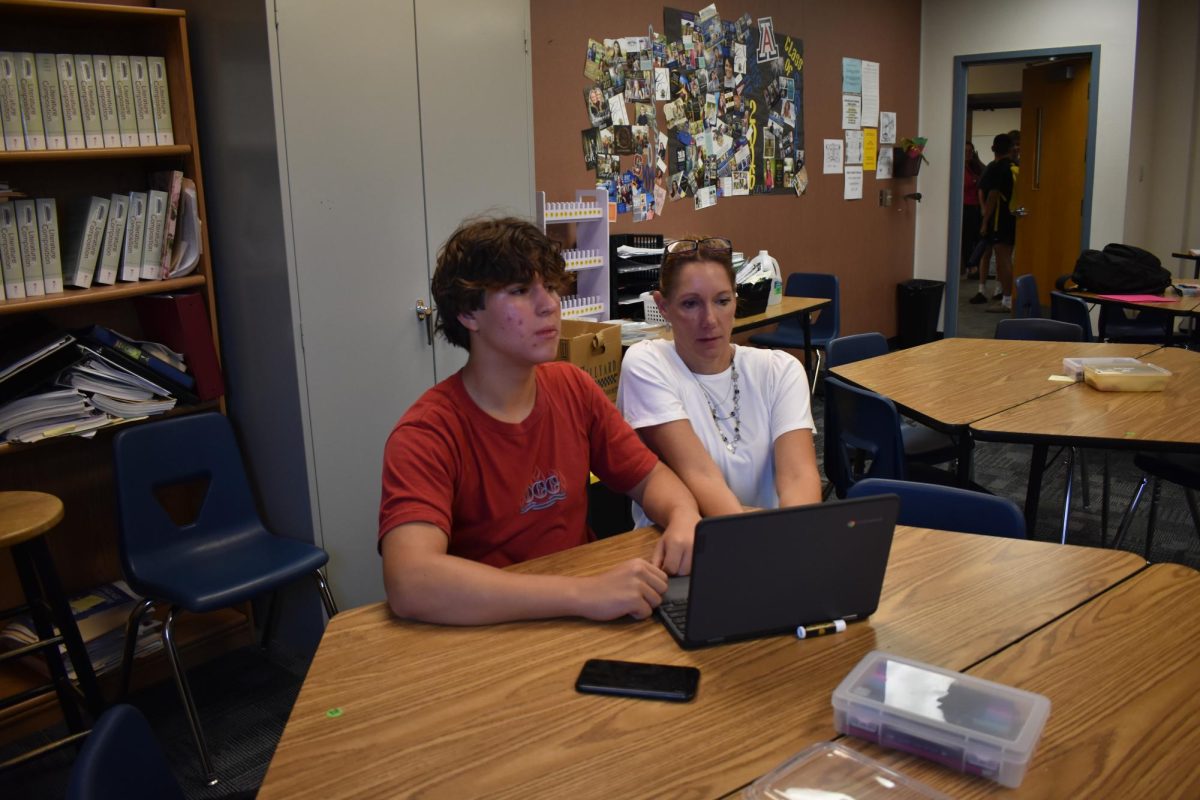A long-standing facet of testing has been putting paper to pencil, filling in bubble sheets, and scribbling away essays as the seconds tick by. However, technology has altered this time-honored narrative drastically.
OHS is welcoming the age of technology with open arms, providing electronic devices to every student, utilizing various online resources, and, the newest addition, adopting the digital versions of many standardized and AP tests. This fall marks the beginning of online PSAT testing for sophomores and juniors.
“It’s required; it’s not even an option [to take the test physically],” said Tracey Heath, OHS counselor.
In the past, OHS offered select digital tests on a need-to-need basis, such as if a student was absent for the ACT or required an alternate AP testing location. However, this is the first year that the school will be taking the leap towards completely digital testing, and many new factors must be addressed before such a change occurs campuswide.
“[It is] required that we have a tech room this year,” Heath said. “During the digital PSAT, we will have a counselor sitting in a room adjacent to the gym…to address technical issues.”
Counselors and administrators are not the only people who must adapt to this new testing format; students have no choice but to make an adjustment to testing digitally. This presents a challenge to individuals who are not fond of the digital testing format–and are given no choice but to comply with this change.
“The school forced me to [take the ACT online] out of convenience, which I don’t think is very fair,” said Kaydence Soltau, senior. “I didn’t do as good as I could have done, and now I have to retake it, and pay for it again.”
Others see the value in going digital but are still apprehensive of the alteration.
“I don’t know if I like it or not because I feel like it is easier to type, but paper and pencil is just better for me,” said Jayneal Patel, junior.
Furthermore, some students question how testing on a computer will impact their previously learned exam-taking strategies.
“For the math sections . . . I’ll probably do better just because everything is more clear. But when it comes to reading and being able to highlight the passages, that might be more of a struggle,” said John Simcoe, junior.
Many feel that a digital format is simply incomparable to traditional paper tests.
“It’s a lot easier to focus on one thing and then move on to the next when you can see a lot of questions on the paper,” Soltau said. “It [is] so much easier to focus when it [is] on paper.”
While students may feel unfamiliar with this sudden shift, there is the reassurance that both teachers and testing bodies–such as the College Board and American College Testing–will adapt their protocols to best ensure student success. Certain changes are already underway to address issues with the digital AP tests given during COVID.
“It actually is more fluid, it’s more interactive in the sense that you can go backward. Before COVID, you couldn’t go back. With this, you can go back, you can highlight, you can…check answers on the multiple-choice,” said Kelly Simon, AP Literature and Composition teacher.
As OHS is one of the largest high schools in Arizona, with a high percentage of students enrolled in at least one AP course or scheduled to take the PSAT and ACT, digital testing will likely mitigate certain challenges that paper and pencil have always presented.
“We had 900 AP tests last year,” Simon said. “That is a lot of movement of physical tests that have to be tracked.”
Moreover, there is the possibility of digital testing making a positive impact on the carbon footprint of OHS–and setting a precedent for other high schools to move in the same direction.
“Can you imagine this entire country going digital and not having to waste all of those PSAT paper booklets? To me, that’s saving a lot of trees; it’s good for the environment,” Heath said.
Challenges will likely arise along this journey towards the digital age, but OHS will not back down from the task. Many see the undeniable validity of moving toward the world of tomorrow found in technology, no matter how uncomfortable the shift may be.
“We’re hoping this is how it will go in the future–all digital,” Heath said.



